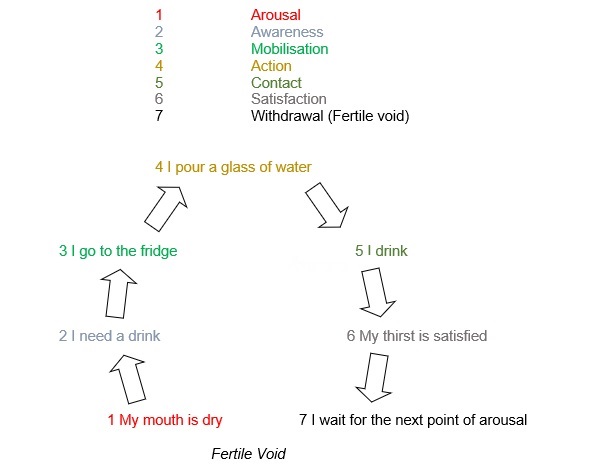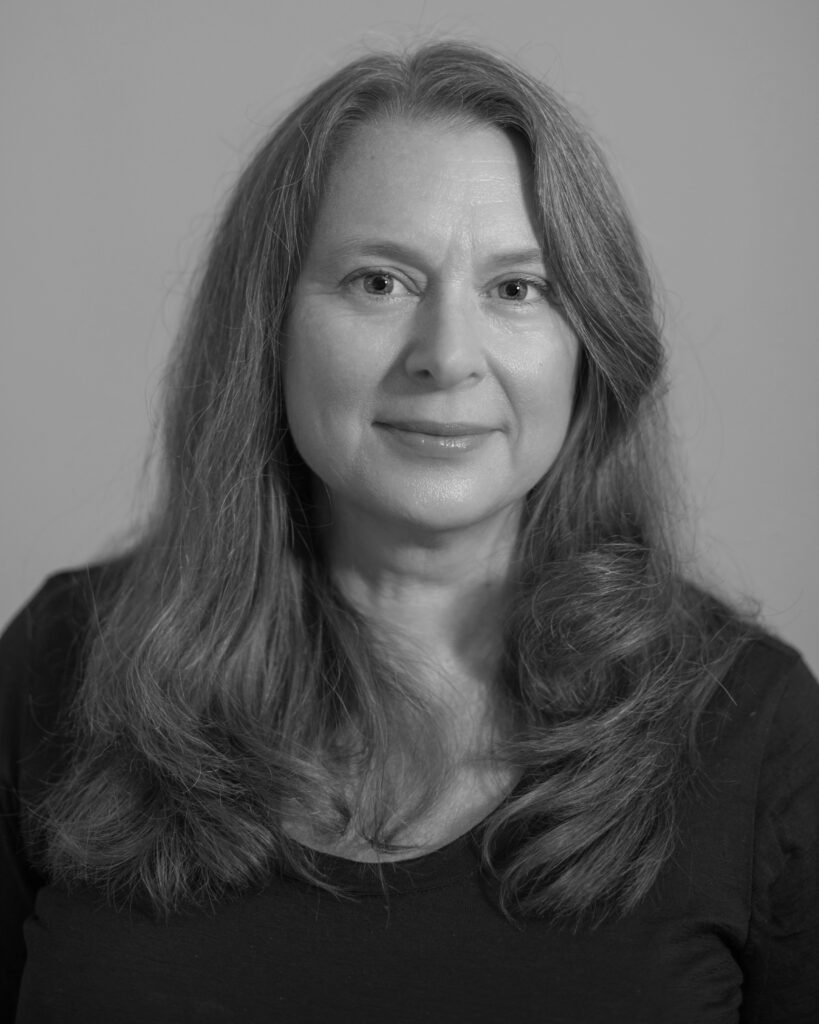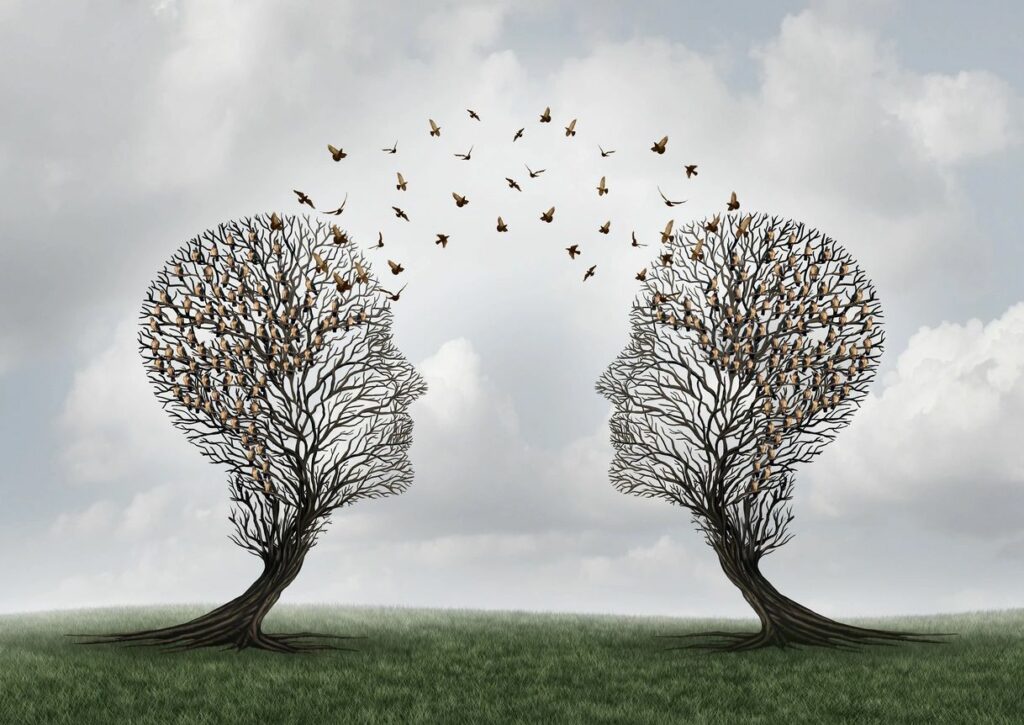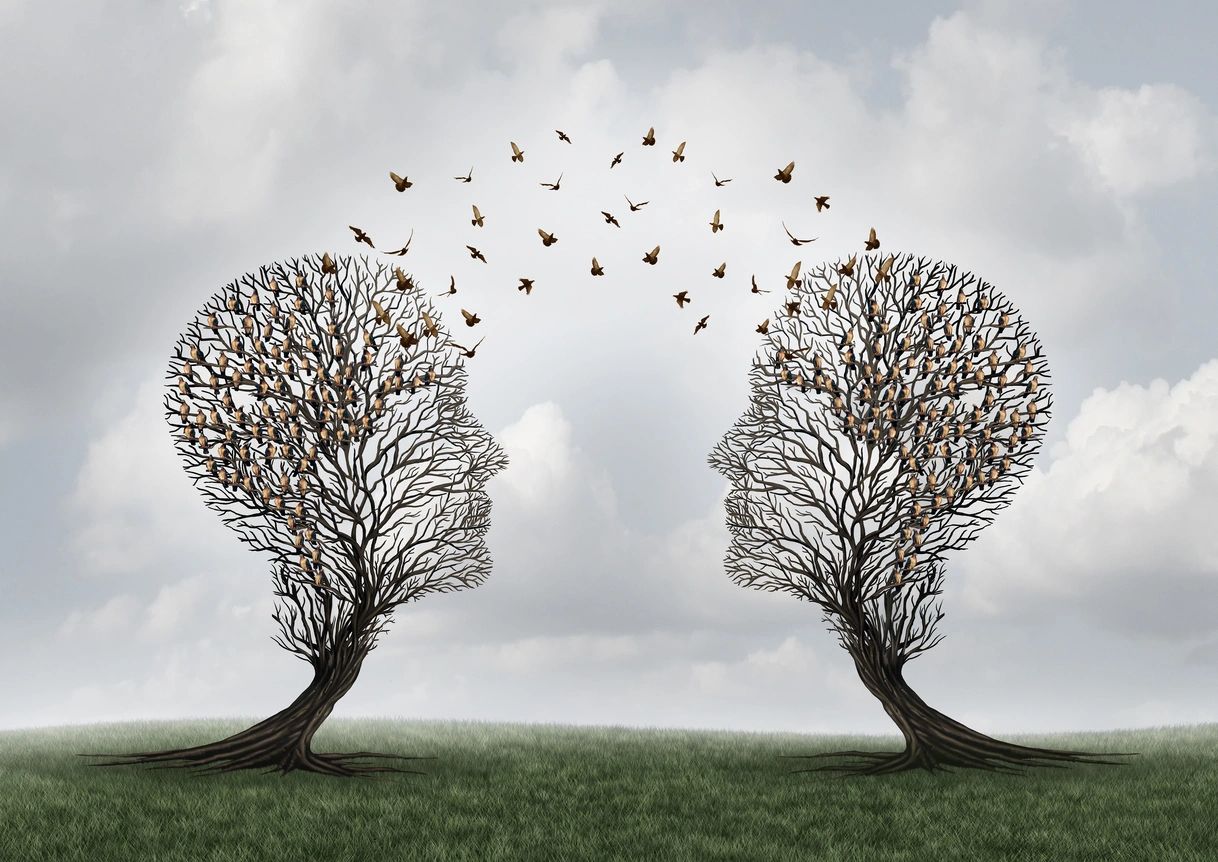Welcome to my “In a Nutshell” series. When you are looking for a therapist the terminology can be baffling. We counsellors are keen to tell you what model of counselling we are trained in and it is confusing because there is so much theory, so many different fields of study and dozens (literally dozens) of different therapeutic modalities. How do you know if what I offer matches what you want from therapy? This limited series of blogs will explain the three core theories I use in my practice and I will attempt to show how they may be useful for you.
The first in the series can be found here https://safespacesussex.co.uk/in-a-nutshell-person-centred-therapy/
The Underlying Principles of Gestalt Counselling
“There is only you to discover and you are a friend.” (Houston,1995, p. 6)
The Gestalt model was founded on a holistic approach, akin to the eastern philosophy of Zen. The approach was spearheaded by Fritz and Laura Perls and examined the human as a complete and whole being consisting of mind, emotion and body, each facet intertwined and meeting the environment in which each person exists. It goes further, asserting the premise that each person is part of his/her own environment and cannot be understood separately from it. The ensuing process of existence is dynamic and creative, it determines how we experience the world in which we live and Gestalt theory acknowledges that as human beings we not only influence our environment but vice versa, because we are part of that environment and not distinct from it.
The model also asserts that each human is proactive and is fully capable of being sentient of his own sensations, thoughts, emotions and perceptions, each of which is a component of the whole being. From a holistic viewpoint change in one area will result in changes to the whole and this can be achieved when the individual brings any or all of these factors into their awareness.
Each client is viewed as a distinct being, with unique insight to their own existence and behaviour. The purpose of therapy within this model is to provide the client with an environment in which they can explore their unfinished business from the past, their perceptions and their feelings, in the here and now, taking on responsibility for the way in which they react. According to Gaie Houston:
“Gestalt is not concerned with blame…It is interested in helping you notice your response-ability at this moment” (Houston, 1995, p. 36)
By increasing self-awareness and taking ownership of feelings and actions the client is encouraged to accept greater responsibility for himself and be aware of the repertoire of responses available to them, thus moving towards a state of autonomy.
We each experience our world from a unique perspective and the term Figure and Ground is used to determine that perspective. Gestalt therapy encourages the client to re-evaluate their perspective by challenging the client to look again at themselves, their actions, thoughts and feelings. This process is cyclic, each healthy cycle providing an opportunity to increase awareness and culminate in “final contact” at which point the need has been satisfied. (See figure 2. below).
However, the client may experience blocks to the emergence of new perception and of greater self-awareness, resulting in an unhealthy cycle where final contact is prevented. In Gestalt terms any prevention in final contact (completion of a gestalt) is unfinished business which leaves the client with a feeling that the cycle is incomplete, although even this may be out of their awareness. Unfinished business is known as a fixed gestalt.
A fixed gestalt will prevent the client from a move towards autonomy. The diagram below demonstrates the factors at play in a fixed gestalt, where the creative and dynamic process required to achieve a healthy cycle stalls.

It is the counsellors aim to assist the client to recognise the block/s causing the fixed gestalt, bringing this into the client’s awareness by inviting the client to assess what they are experiencing “here and now”. The client holds the keys to his own state of autonomy and can free himself from the fixed position he is experiencing by recognising how he is reacting, how appropriate that response really is and how he could react instead; the counsellor provides a safe space for him to test the alternative.
The Gestalt Cycle
The Gestalt Cycle demonstrates the framework in which a person becomes aware of a need and follows through to complete the satisfaction of that need. The cycle follows seven steps.

A complete cycle is called a gestalt.
“The completion of a gestalt with good form and vibrant shape is a thing of beauty formed in relation to the environment.” (Mann, 2010, p. 38)
A complete gestalt gives satisfaction of the need, a block at any point during the cycle will prevent satisfaction being met.
Interruptions to contact
Interruptions or blocks to the Gestalt Cycle of Awareness (contact) have been identified as:
- Desensitisation – when a person’s emotional responsiveness to negative stimuli from the environment becomes diminished e.g. a person has repeatedly been undermined intellectually so they no longer feel an emotional response to the words “You are stupid”.
- Deflection – a person uses avoiding behaviours e.g. changes the subject during a conversation they don’t like.
- Introjection – This relates to ‘swallowing messages whole’. e.g the message a child hears from a caregiver may be ” You’re stupid”, they swallow this message whole and do not attempt to fulfill their potential as an adult because they do not believe themselves to be capable.
- Projection – This relates to when a person confuses “Other” for the “Self“. e.g. A person may believe all other people are liars because he is a liar.
- Retroflection – This is when a person withholds emotions or responses which they feel towards others e.g. if I am angry with someone and I don’t express the emotion, it will build up inside and have later consequences that may be disproportionate to my initial anger.
- Egotism – This is when there is no attempt to interact between one person and another, the exchange will only be one way e.g. a person who talks about himself without listening to or engaging with the other person.
- Confluence – This is where there is no boundary between self and other, the person will feel merged with someone else. e.g. a woman who can’t decide what colour jumper to buy for herself without the input and approval of her partner.
Figure and Ground
Figure and ground relates to the way in which we make sense of our environment, the figure being interpreted by the brain as being the most vital information to process, and the ground being secondary in our perception, providing context. In Gestalt terms figure and ground applies to all perception, examples include:
- Visual perception – The black and white curves of Rubins vase (Rubin 1915) (a monochrome depiction of two faces mirroring each other, forming a vase shape between them)

- Music – Notes form the figure against a ground of silence (e.g. piano keys being struck, guitar strings being strummed)
- Movement – The human brain will perceive the sudden unexpected movement of a snake nearby when walking in a forest but will barely register the gentle sway of the trees.
Accordingly, in the Gestalt model, the client’s perception of self and environment is viewed in terms of figure and ground. As the client’s level of self-awareness affects their perception of their emotions and actions, their perception of figure and ground also changes. As a client’s perception changes they have a greater scope to react in a new and often healthier way to their feelings, their situation and to the people around them.
References
Houston, G. (1995). The Now Red Book of Gestalt (7th Revised edition ed.). London, : Rochester Foundation.
Mann, D. (2010). Gestalt Therapy – 100 Key Points and Techniques. Hove, East Sussex: Routledge.
Rubin, E. (1915) Rubin’s Vase. Synsoplevede Figurer. Denmark.

Helen Clarke is a qualified Humanistic Integrative Counsellor based in Coastal West Sussex. She specialises in loss and the associated physical signs of profound, traumatic loss, such as palpitations, sleep issues, panic attacks, vivid and recurrent dreams, unexplained aches & pains, a sense of immediate and physical fear or overwhelming sadness.
Follow this link for more information on Helen’s private practice. https://safespacesussex.co.uk
Follow @sussexcounsell1 on Twitter

